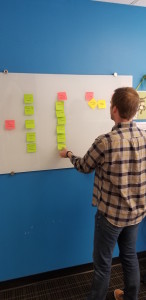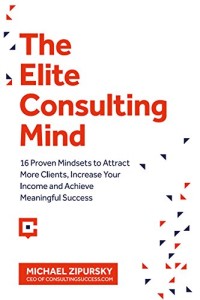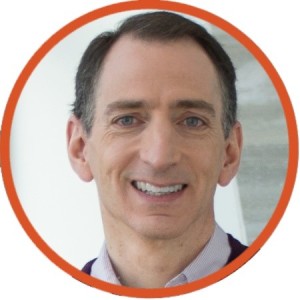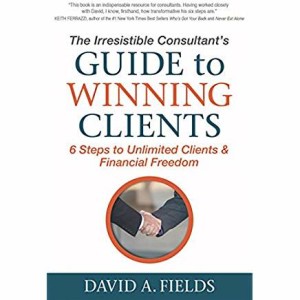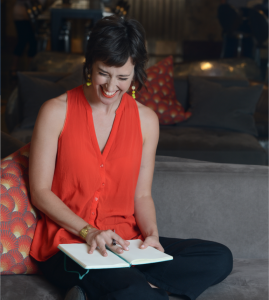Chalmers Brothers started out getting an engineering degree before getting his MBA and joining Accenture, but that’s not why he’s here. He’s on Sales for Nerds because he wrote one of the most fascinating books I’ve read, Language and the Pursuit of Happiness. If you haven’t read it, you should, even after you listen to/read this discussion.
This is a bit of a different episode– there are no “sales tactics” or “marketing tips”, but I think you’ll find it very worthwhile– it will change the way you have conversations– both with others, and in your own head.
Chalmers shares wisdom how:
- We are not hermits, we live with other people (even us introverts).
- We live in language like fish live in water. We use language not only to describe but to generate our world.
- We are all unique observers. If we walk down the street with someone else, we will see different things.
- Leaders (and sales people, and business owners) are paid to have effective conversations. Most of our relationships are conversational, after all.
- We see with our eyes but we observe with our distinctions.
- Chalmers is trying to move people away from right/wrong orientation to working/not working.
- We constantly make assertions about the world (“I am 5 foot 10”)– assertions are statements that someone can verify or invalidate.
- We also constantly make assessments (“I am short”, “she is reliable”), which are subjective.
- The big problem is confusing these two types of language, and not realizing that our assessments are not assertions, and that they may be disconnected from reality. (“sales is slimy”, “he is unreliable”).
- Assessments aren’t bad– they just need to be conscious and have standards and connect assessments to assertions.
- Declarations are powerful, generative acts (“I am good at sales”/”I am bad at sales”). Are you creating empowering or disempowering conversations with yourself?
- If you want to design your own life (the only one we’ve got), start by being conscious of your assertions, assessments, and declarations.
- We sometimes think that “I don’t know” is disempowering, but it’s actually a very powerful declaration, which really means, “I know that I don’t know”, which opens the door to learning. As the world changes faster and faster, the ability to learn becomes more and more important. (Brothers quotes philosopher Eric Hoffer: “In times of change, those who are prepared to learn will inherit the land, while who already know will find themselves equipped to face a world that no longer exists.”)
- If you’re going to have a difficult conversation, what can you do so that you have the fewest regrets?
- We use language to collaborate and manage commitments with others via requests, offers, and promises.
- An effective request has 4 elements: a committed speaker, a committed listener, future action/condition of satisfaction, including a deadline and context, and mood.
- Such a request has 4 valid responses: yes, no, commit to commit (“have to check my calendar, but I’ll have a response by 5PM tomorrow”), or a counteroffer.
- Another important distinction is between a promise broken and a silent expectation unmet. If someone breaks a promise, you can make a reasonable complaint, but resentment comes when someone fails to honor a request you never made.
- Think about what proportion of your interactions at work (and at home) come from clear commitments or from unspoken expectations.
- Given the results you want, are your explanations serving you? (Events/assertions are not the springboard for actions, it’s the assessments/explanations that we use to interpret them.) If we don’t even know we’re doing this, it’s very hard to get it right.
- Biology predisposes us to negative interpretations– they helped to keep us alive– that may not serve us well now.
053 Chalmers Brothers on the Language of Happiness.mp3 – powered by Happy Scribe
Love helping your clients, but its sales and marketing, but somehow you ended up with sales and marketing responsibilities. And this is the podcast for you. Hi, chief nerd Reuben Swartz here. And I spent a long time learning these lessons the hard way. And I want to help you learn the easy way by sharing my experiences and talking with brilliant people who have figured out how to hack not just the code, but the sales and marketing process as well.
Of course, as a nerdy person who hated struggling with complex theorems, I had to create my own CRM for people who actually hate selling, which sounds like an oxymoron. But if it sounds interesting to you, check it out at Mimiran.com. That’s M-I-M-I-R-A-N.COM. And whether or not you need a new CRM, you’ll find proposal templates and sample lead magnets to help you grow your business.
Now let’s get to it today.
I’m really excited to have with me Chalmers Brothers. He is the author of Language and the Pursuit of Happiness. Well, that’s actually his first book and the one I’ve read. He’s also the author of Language and the Pursuit of Leadership Excellence. And this these books have been adopted at places like Georgetown and Harley Davidson. He’s been on the speaking circuit for Vistage. But really, it’s kind of funny because somebody recommended language in the pursuit of happiness to me.
And I read it and it was really mind blowing. And then somehow a couple of months later, Chalmers connected with me on LinkedIn. And I thought it was a sign from the universe like, how did he know that I was reading his book and really wanted to come on my podcast. But it took us, I don’t know what, but two years to actually get this thing scheduled.
So he’s finally here and I’m really excited about what he’s got to say. Chalmers, welcome to Sales for Nerds.
Thank you so much. Reuben. It’s a pleasure being with you. And it was a roundabout way of connecting, but we made it happen. So so thanks for the invitation.
Truly awesome. And most importantly, what do you have in your glass?
I have Balvenie fourteen Caribbean cask.
Oh I love that one. It’s got that little bit of rum in it right from the broadcast.
I’m blessed and fortunate to be able to say that my wife and I and four of our dearest friends went to Scotland recently my first time, and I was introduced to the world of Scots in a way that I wasn’t before. And that’s one of the ones that we had over there before the trip. I had not had it, and I really like it. It’s wonderful.
and I’ve got some Oban eighteen, not the the fourteen that I tend to to drink more regularly. But I picked up a bottle of the eighteen recently and it is a lot like the fourteen, but as you might expect, just a little bit mellower. It’s still got that like honey and caramel. But yeah, it’s quite delicious.
So you, you, you have an engineering background and you’d like to say you’re an accidental engineer. Most of the people here are accidental salespeople and we’re not necessarily going to talk about sales per say the way we usually do. But I wanted to talk a little bit about your book, and this is so timely because I’ve been thinking a lot about how the stories we tell ourselves are so important.
And you say a lot of things about language that once you read them, you’re like, oh, that’s so obvious. But why didn’t I think of that before, both in terms of how we speak to ourselves and, of course, how we communicate with other people.
Yes, yes. And I have to say, Reuben, I am standing on gigantic shoulders. Everything in both books really is from my great fortune, from meeting and learning, from two incredible groups of people. One is called the organisation is called Education for Living. It’s in Baton Rouge, Louisiana. And the second one, and more specifically is the new field network in Boulder, Colorado. And I have to say, Julia Aliah is the founder of Nuffield and he is the most influential teacher person in my life.
And a great many of the ways that I understand these distinctions, the way I frame them, I’m sharing my version of what I got taught by Julio. And it’s been I did that work long program in nineteen ninety five called Mastering the Art of Professional Coaching. And since January of ninety six, this is all I’ve been doing. Our program is based on, as you mentioned, right this way of understanding language and more specifically the power of language that if you ask, for example, 100 people, 100000 people, what is language, what does language for the gigantic majority.
Right. Will answer with? Well, a tool for communication or some variation of that and Reuben that is such a widely held way of understanding language that most people don’t see it as a way of understanding language. They see it as a definition of language. And the work that I do now and what I was taught is that language, in addition to, yes, we do describe with language, but in addition to that, there’s a generative capacity to to our thoughts and our speech and is understanding the way in which we create and generate with language that really makes the difference.
When you look at leadership, for example, lots of my work is around leadership, but the same, I think, could be applied to sales. If I ask and I do this all the time in my work, I have a room full of leaders in front of me and I say, guys, when it’s all said and done, what do you get paid to do? Right. I mean, of all the things you have to do in your job as a leader, what are the most important one or two or three things that you say you get paid to do?
And as you might imagine, they answer with things like, I get paid to retain customers, I get paid to shape the culture of the company. I get paid to groom the next generation of leaders to ensure continuous process improvement. I get paid to ensure satisfied customers. I get paid to to drive excellence in execution and innovate and inspire and motivate and coach and listen all these things. And when you actually look at it, what would a camera see you doing as you’re doing all of those things?
Right, what is the human being who is doing all of those things actually doing and when we think about it a little bit, well, that human being is engaging with other human beings, talking and listening leaders get paid to have effective conversations. And I would say the same question could be asked of salespeople of all the things you have to do to be a successful salesperson. Right. Everybody does a thousand different things, and that’s fine. But what are the most important and Reuben your background may be much stronger than me here.
If you ask a bunch of excellent successful salespeople, what are the most important one or two or three things you say you have to do to be successful as a salesperson, what are one or two or three or four things that that they would respond to you with?
Well, I think they would probably say one, two, three and four are all I need to talk to prospects and customers.
Exactly, exactly. And it’s interesting how how obvious this is when we look at it is that it’s about relationships, it’s about relationships. And most of our relationships are not physical. They’re not sexual. They’re conversational.
It’s so funny you mention that I’m literally staring at that highlight right now in my notes because I wanted to make sure we touched on that. And then there’s another sentence and then it says, change them and you change the relationship, stop them and you stop the relationship. And I think that’s a really powerful way to look at it. And we don’t always take the time to be intentional about those conversations.
No, you’re exactly right, you’re exactly right and and broader than that, the framework that I was introduced to it and now is central in the work that I do is broader than that. All organisations themselves, when you really look at them deeply, all organisations can be understood as networks of conversations, networks of commitments, people making and managing promises with each other. Right. Big ones, little ones, informal, formal in writing orally. And once you understand that the company itself is composed of a network.
Of internal commitments, these conversations, again, given the creative dimension of language, they create quantitative and qualitative results. Productivity is the result of very quantitative profitability, obviously, as a result. Very quantitative market share. Absolutely. But your organizational culture is also a result of your public identity, how you show up in the world as a result, the nature of our most important relationships. These are results and any more. When I look at the way my career has evolved over the years, almost all the work I do inside organizations now Reuben, broadly speaking, can be understood to be supporting the leadership team and creating and sustaining the certain type of corporate culture that they say is most conducive to the results that they want to produce.
There is a Peter Drucker years ago, leadership guru, he said culture eats strategy for breakfast. Right. Culture eats strategy for breakfast, and this is largely the work I’m doing now is all about culture work. And for this we don’t need functional or technical competencies. We need conversational, relational and emotional competencies. Right. These are the types of competencies that we need if we’re in the business of shaping this physical but very real thing we call organizational culture.
In fact, lately, a lot of my clients are starting to use the term threshold competencies to refer to functional and technical competencies. But these are considered to be the cost of admission. But this is what it cost to even play the game. What really separates us organization from organization? It has to do with the organizational culture, and this is built by sustained by conversational, relational and emotional competency. So, you know, all of my work is around these these competencies.
All of my clients are way smarter than me functionally and technically, all of my work is around conversations and relations.
Now, could we extend this model or could we include under the the umbrella of organization, a family, a network of friendships, a nonprofit, a church, whatever?
Absolutely. I mean, think about it. There’s a lady up there named Bernie Brown, and she’s a powerful speaker. She’s from Houston, I think, a researcher and extremely motivational. She talks about the power of vulnerability. And she’s widely known and is a spectacular human being. And she talks about human beings are hard wired for connection. Right, I mean, think about it. Language itself is acquired socially. Right, it’s not a quiet as an individual, it’s a quiet if I was born in a different country, of course, I would learn a different language because I was in that society, that culture, this notion in my work, I say that we are not hermits.
Basic claim, right, we are not hermit’s, which means we do already big, big, big chunks of our life already with and through people, and because we’re not hermits, because we do so much of our life with and through people, how you dance with people matters, but how you show up matters. How you coordinate action like this broad definition, big C, big A, how do we coordinate action with all the other non hermit’s that we coordinate action with in our lives?
Because the way that we do this basic coordination of action impacts a huge variety of our quantitative and qualitative results.
Now, one of the interesting things you talk about in the first book, Language of the Pursuit of Happiness, you sort of you you have a lot of you delve into distinctions.
Right. And the more distinctions we can make, the more we kind of understand something as a as an amateur or I get asked all the time, what kind of trees are there in my backyard? And I say, I don’t know, they’re green.
And you mentioned in the book that the forester or the woodcarver or someone else see as those trees completely differently. And one of the things that you say is interesting that I think it’s easy to get sucked into. You talk about different types of thoughts or ways of communicating, and he says non hermit’s, our ability to keep assertions and assessments separate and distinct from each other is critical. And I think that’s really important. But can we talk a little bit about assertions and assessments and why that matters?
I would love to. And in fact, before I do that, I want to go a little bit broader with distinctions, because this is a gigantic topic. What we’re talking about here, Reuben, is the fallacy of objectivity that we do not we are not objective in any way, shape or form. Now, yes, there are certain and we’ll talk about this with assertions there are certain historical and biological facts, but in a broad, broad way, the this notion of the scientific paradigm.
Right, that we we see things as they are. Well, a as you mentioned, a forester and a wood carver do not by definition see the same thing when they look at the same forest. Right, they have different distinctions. My wife is a physician, a Western trained physician and an Eastern trained physician do not see the same thing when they look at the same patient. Right. We observe, we see with our eyes, but we observe through our distinctions.
You give me new distinctions in the domain of forestry. My next walk in the woods is different. Right, you give me new distinctions in the domain of language, my next walk in the world is different, right and right write these distinctions, make us a unique type of observer. So a basic claim in both of my books is that we human beings, by definition, we are unique observers. You and I could walk down the same street at the same time, look at the same things.
And when you ask us afterwards, what did you notice on the trip down the street? We’re going to have a very different report. Right, and and one of us isn’t right and the other one isn’t wrong and Reuben moving people away from this right wrong orientation is one of my central one of my central themes in my life is this notion that and it’s interesting how thickly we come from the right or wrong orientation, the right or wrong background. But to help people understand, you know, you’re not wrong just because you don’t have the same distinctions.
I do. You’re just a different observer. Right. And different observers see different possibilities, can take different actions and produce different results. And one of the most powerful sets of distinctions I was ever shared was ever taught. And now I get to share is assertions and assessments. And so at a basic level, there’s a little activity I do with folks and I have two statements on a page. On the left side is the statement, I am a man and on the right side I am stupid.
So the question is, what’s the difference between those two statements? And underneath, I am a man, we have other things like John is six feet, five inches tall. The building is one hundred and twenty seven feet across, it’s 72 degrees Fahrenheit today in Naples, Florida, and on the right side under I am stupid. We have things like John is an excellent CEO. Maria is a fabulous dancer. The building is chilly. Right. So I am a man, John is six foot five.
The building is twenty seven feet across. These are assertions what we historically call facts on the right side. I am stupid. Maria is a great dancer. All of these are assessment’s what we typically call opinions or personal judgments and Reuben. Our ability to keep these separate is gigantic. These are not the same thing at all and there are very different results that get produced whether we use these will or use them poorly. And in my work, when I do a long program with folks, we absolutely talk about assertions and assessments.
And it’s interesting, let’s you and I right now try to have a conversation only using assertions. Oh, OK. OK, all right. So here we go. I’ll start. I’m sitting in a chair. I’m standing up.
I am five foot 10 inches tall.
I’m five foot 10 inches tall, too.
I live in Naples, Florida.
I live in Austin, Texas.
Is this not a ridiculously, horrendously dull and stilted conversation, we should be far more judgmental and throw some assessments in there.
So what that means is we don’t do this. All of our conversations are peppered with personal judgments, personal opinions. And, of course, assessments are not bad. We must make assessments. The problem is not that we make assessments. The problem is we begin to hold them as the truth, them as assertions. The assessments we make about ourselves can paralyzes. The assessments we make about other people orient us toward them in certain ways that we can close possibilities and be completely unaware that we’re doing this.
Right, have to guess that, right, we are assessment machines, but a crucial distinction is can we make grounded assessments? Can we make assessments that are connected to assertions, facts in a way that we can connect the dots? And also do we make assessments based on any standard they consciously declared standard? So a simple example. If I say John is unreliable, right. For that to be a grounded assessment, I have to have some times in which John did make an appointment.
On Tuesday at two o’clock, he said he’d be here. He didn’t show up on Wednesday at four o’clock. He said he’d be there. He didn’t show up on Saturday morning at eight thirty. He said he’d be there. He didn’t show up three assertions. Absolutely. Now we can talk about what is my standard for reliability. Well, my standard is if you miss two meetings in a six month period and don’t call me ahead of time, I ask you, is unreliable.
I put you in an unreliable box. Right. But it’s interesting how many of the assessments that we make are not at all done in that with that kind of rigor. Right. Right. We don’t have a consciously declared standard for laziness or ugliness or excellence or high quality. And yet we go ahead and make these assessments nonetheless. And my work is this. That’s fine. But let’s have both eyes open because assertions belong to the past and the present.
John missed two meetings in a row in February. That statement sits there, but once I say John is unreliable, did you feel it now swing toward a prediction of his future behavior?
Right. And it’s going to be a lens through which we now manage interactions with him.
If it is Reuben and you know why, I’m going to find evidence moving forward every single time he’s unreliable or late, it’s going to register. Absolutely. I’m going to see it very clearly and I’m going to write off as an aberration or miss entirely when he’s on time. Right. You know why? Because human beings love to be. Right, right. We love to be right. And our assessments are absolutely this is a linguistic trap, it’s a linguistic trap, but if we don’t think we’re making assessments in the first place, none of what we talked about makes any sense at all.
Right. If you think you’re seeing it like it is, I alone have cosmic objectivity in my eyes or like clear panes of glass allowing me access to native reality. Right. You know, Reuben, when I when I first started this work, when I was introduced to this work in nineteen eighty seven, I have to be honest, I actually thought and I was twenty six, twenty seven. I thought in my heart of hearts that if you didn’t, if anybody didn’t see things the way I did, that they were stupid, there was something wrong with them.
I actually thought in my heart of hearts that the way I saw things was the way they were, look, you have eyes, it’s right there, open you right. There it is. And interestingly, I grew up in southeast Louisiana, public school education, kind of a normal family upbringing, kind of a suburban, little bit rural environment, but close enough to New Orleans that we were in New Orleans quite a bit. And so nothing extraordinary there.
But somehow and nobody taught me this explicitly, but somehow I was convinced that I was objective, that the way I saw things was the way they were. And I remember I think there was somebody at that initial workshop, one of the instructors said something like this to me. He said, look, Thomas, you’re a good guy and all that stuff. But if you keep operating this way, you’re going to dramatically limit the number of quality people that will ever be in your life.
Because they’ll go away. And I said, I don’t want that to happen, they said, let’s stay in his workshop, it’s his workshop. But Reuben I mentioned it because I don’t know why I felt it that strongly, but I did. And nobody taught me that it was never part of a school class. It was never part of anything that I experienced. But I just felt it so, so strongly that I was objective. Well, I think we’re all kind of wired to think that we see the world correctly, right?
We want to have belief in our interpretation of the world was introduced to me and now is is central to my work. People of goodwill can and do interpret things quite differently than I do. Absolutely. All the time. And that is simply the way we are. There’s there’s some biological roots to this work, which is called ontological coaching, that by definition, there’s nothing in the human biology that allows me to claim that I know how anything is outside of me.
All I know is how it is for me. And this is whether it’s Albert Einstein and other folks have said a version of this, we see the world not as it is, but as we are right, that we see the world right. And so people wait long, long ago have been pointing to this. Right. This is part of several wisdom traditions that this is. It goes way back. But I just find it interesting that for me, I just felt so acutely that I was objective.
And, you know, you give me a new set of distinctions. I promise you, I see things differently. You put me in a different mood. I see things differently. You do. You do something different to my biology. Like give me a scotch. Right. Right. Right. Absolutely. Absolutely. So there’s these three domains, right? The domain of our language, internal and external conversations, the domain of our moods and emotions and the domain of our physical body and biology.
And all of these are obviously interdependent, interrelated with each other. But this notion that we are unique observers, well, we’re not a walking, talking eyeball observer. We are a walking, talking bundle of coherency and bundle of congruency between our language, which is internal and external conversations, our moods and emotions and our physical bodies. And we have all experienced this firsthand. I mean, think of it. How many of us have ever felt better, which is mood after we exercise, which is body.
Right? We do. And then when you exercise and feel better now we go to language. Do you not interpret the same flat tire or often comment differently? Absolutely. Right, but it’s this notion that each of us is a unique observer, these three dimensions are central interrelated, and the way that we observe is based on all of them. Of course, distinctions, right. We can have linguistic distinctions. We can also have felt biological distinctions, meaning I live on a little dock here in Naples, Florida.
I can tell when I go fishing, I can tell within five seconds if I have a Jack Krieble or redfish on the line. Because I have distinctions, right, the jackrabbit shakes the head, you can feel it bump up, up, up, up, up, up on the rod tip and people are way more experienced than I am in fishing. Have way more distinctions than that. All right, so we have felt distinctions, you have linguistic distinctions and auto mechanic in a garage, right?
You take your car in and you say, you know, the car’s not running, right? And he says, start it up. Open the hood and he says, look, you hear that ding, ding, ding, ding, ding, ding, ding, ding, ding. I said, No, no, I hear I hear a motor is a no, no, no. Listen, ding, ding, ding, ding, ding.
They have distinctions, right? There are there are lessened distinctions, audible distinctions, visual distinction, linguistic distinctions. And all of these, obviously, coupled with biology, moods and emotions, they impact the way that we observe. And from the way we observe, we take action. And from the actions we take, we produce results both quantitative and qualitative.
So I want to take a moment and split this into two separate branches because I feel like there’s one is the conversations we have with ourselves and then, of course, the more complex conversations we have with other people.
But I want to start with the conversations we have with ourselves, because I think a lot of what you write is really important to folks listening who might say, for example, I’m going to make an assertion that I’ve never had any formal sales training or whatever and then make the assessment. Therefore, I can never be good at sales and.
Right. And it sort of spirals from there.
And boom, you have created a world where you cannot be good.
That’s correct. That’s correct. And so there’s a notion, some basic claims of looking at language this way is number one, we live in language Reuben, we live in language. And by that we mean the little voice inside is rarely silent. Right, I ask a room full of people, I said, who here today has the little voice inside? But every hand goes up. I mean, I want to say, what’s he talking about? That’s what I’m talking about.
That’s the one Mark Twain had a great quote. He said, I’m always in conversation and sometimes other people are involved. Right? Right. And so it’s not just Mark Twain or schizophrenic’s. It’s all of us. So basic, basically. Number one is that we live in language, no exceptions, basically. Number two is that language creates and generates. It doesn’t just describe. Right. And when you put those two together, because we live in language and because language has a creative dimension to it.
Well, that means we’re always creating or generating something. It just may or may not be what we say we want at the other side of our mouth and any any kind of I’m not or I am statement. And it was taught to me this way, not just with this body of work, but in spiritual traditions as well. If you say I am stupid, I am no good, I am excellent. Any kind of I am statement. Get ready for the creative power of the universe to kick in because I am.
Statements are profoundly powerful. Declarations and declarations create individual and organizational context. And if I have a declaration that says I’ll never be good at this, I don’t have I don’t have the background to be successful here. What happens is we set ourself up, as you mentioned, for failure. I find evidence to make myself right. Right. I love to be right. And all the things I do, I’m looking through a lens, not a physical lands, of course, but a linguistic lens, an emotional lens that distorts everything that I’m saying.
And so this notion that that the internal the internal narratives that we live in are profoundly creative. And it’s interesting how and I ask this to people say, look how many of us in this room today, we’re all successful people, professional people. How many of us in the room today have ever found yourself from time to time living in unpalatable conversations? But every hand goes that Reuben, right, everybody has done this right, and that’s because our language is connected to our moods.
A mood of resentment, for example, has stories of victimhood, internal narratives of I’m the victim. This is unfair. I’m going to get you back whenever I can. All this stuff right. Resignation, nothing I do matters. I think I’ll just stay on the couch. All that. There’s a such a strong connection with their moods and our internal narratives. That and again, back to the Big I self-awareness focus. Many of us are terrible observers of our own moods.
And so we really can’t talk about internal narratives without talking about moods, without talking about the gigantic impact that moods have on our internal narratives and that our internal narratives have on our moods.
So this whole notion of, hey, I’ve never done formal sales training, I’m bad at sales, I’ll always be bad at sales. I just had a sales call that went poorly. Now I’m in a foul mood. It all kind of builds on itself. How do we break out of that and have a more powerful conversation with our or empowering conversation with ourselves?
You know, the first step to me is being aware that we are the authors of our internal narratives to begin with. Right. There’s a great expression, Reuben, that event does not equal explanation. Right. The events happen in our lives, the events with with the potential customer, events with our spouse, events on the turnpike, events on the shop floor, write events, events, events, events. And here’s what we do as human beings.
Number one, we make up stories about these events. Number two, we hold these stories to be the truth. And number three, we forget that we made them up.
So what an event be sort of analogous to an assertion, would and our interpretation be analogous to the assassination?
OK. And this notion that and again, it’s not wrong that we make up explanations. We have to because we live in language. Right. It’s what we do. The problem is we don’t see that we’re doing this right. Problem is right. We begin holding our explanation as it is, as if it is the event. We begin holding our assessment as if it is an assertion. And depending on the nature of that assessment, depending on the nature of that interpretation, it can paralyzes.
But none of this makes any sense at all. If you don’t see yourself as the author to begin with. Once we begin to see that we I’m not just reading this, I wrote them, then we can have a different conversation, huh? Isn’t it interesting of all the possible interpretations I could have formed? Isn’t it interesting I found this one? Huh, let’s talk about that, let’s talk about that right? And now is when hopefully coaching can come in, right?
Help can come in from a colleague, a friend, a spouse and say, listen, Reuben man, here’s what just happened and here’s the way I’m interpreting it. Here’s why I’m holding it not with my hands, but with my interpretations. Let me bounce it off of you and let’s talk. Do you see other possibilities here? And I have to say this, Reuben, I’ve been fortunate to speak for over twenty two years to peer groups and the Vistage community, Vistage peer groups, and that’s the power of a peer group, right.
Because you get to say, hey, listen, guys, ladies, this is what happened to me. Here’s the way I’m interpreting it. What do you think? What do you think, are there other possibilities here, because by definition, I’m a unique observer, right? I have a certain set of distinctions. I’m living in certain spaces. I have a certain genetic heritage and biological predisposition. And this is the interpretation I came up with. But this is what I’ve learned over the years.
The movement, the shift from not being able to see that you are indeed the author of your own interpretations. And those interpretations form the basis for your actions. And those actions influence and drive your results. The shift from not being able to see that and being able to see it, it’s an it’s an ocean. It’s a substantial expansion of awareness to be able to acknowledge and accept, see that we are indeed the authors of our own interpretations. It’s a but but that step to me, that’s the threshold.
That is the minimum level of self-awareness that we need to really be conscious about designing our own lives.
When it’s interesting, you mentioned threshold, because one of my other notes that I thought was really powerful out of the book is saying that ignorance is not the opposite of learning. It’s the threshold of learning. And so much of us about trying to always be right.
Being right means that you don’t want to allow yourself to be ignorant. Right. It’s perfect, is perfect.
And instead, we want to be able to be ignorant because then we get to learn stuff and that’s kind of fun. And then we get to see the world in new ways. Spectacular.
I mean, think of it this way. And this notion ignorance means I don’t know what the capacity and again, the power of language I don’t know is a profoundly powerful declaration. And when we declare right. When we declare internally or externally, I don’t know. We’re not describing a state of affairs nearly as much as we are producing something. What we’re producing is called a context or an opening for learning, not physical, utterly and completely real. When we declare, I don’t know either to ourselves or out loud, we create this nonphysical but very real space, this emotional space where now everything else being equal learning is ridiculously more likely.
There’s a and again, looking back, I’m looking at your little emoji or your little symbol, right. The Yin yang. Right. For your your podcast. This is this goes back, back, back, back, back. There’s a Buddhist expression. You can’t pour water into a glass. It’s already full. Right. Right. And this this capacity and when we say when we declare I don’t know, what we’re really saying is I know that.
I don’t know. And that is what we call ignorance, blindness is I don’t know that I don’t know. Right. So a quick and dirty formula back to my engineering days. A quick and dirty formula for learning is we got to get from blindness. I don’t know that. I don’t know to ignorance. I know that. I don’t know. And the way that we do that is we declare it into being we simply speak it. So I don’t know right now something is different.
But, you know, as we think about I don’t know, we live right now in a time of ongoing, relentless change. And given that background of ongoing, relentless change, our ability to learn as individuals and organizations, it’s a ten out of ten. It’s a ten out of ten is gigantically important. There’s a great one of my favorite philosophers around, I don’t know are around learning to learn a guy named Eric Hoffer. He said in times of change, those who are prepared to learn will inherit the land, while those who think they already know will find themselves wonderfully equipped to face a world that no longer exists spectacularly compared to yesterday.
They are. They say the Pentagon is always fighting the last war, and so many of us are make fun of the Pentagon for doing that. But we do a lot of that in our own lives.
We do. And maybe this is men more than women. But again, back to Brené Brown, right? The power of vulnerability, women to use the term vulnerability. Men often use the term authenticity. But it’s the same thing, right? It’s this capacity to be real, to be present with other people because we have a good B.S. detector, Reuben, and we also have an authenticity detector. And the older I get, the more obvious this is my public identity is enhanced, not diminished, when I acknowledge areas that I don’t know.
Right, because everybody has a good B.S. detector. Like I do, like I do, and it’s just taken me sixty one years. To get clear on this, but again and again, when you look at the power of language here, right, we declare beginner hood into being, we speak it so kaboom. And it matters. It really matters
That really struck me a lot reading the book. Sorry to interrupt. I want to because I feel like I’m probably not the only one who has this experience. When you get out in the world and you’re an expert in whatever services you provide, you don’t want to say at least I didn’t want to say. I don’t know. When it comes to questions pertaining to what you do, you’re supposed to be the expert. You’re supposed to have the answers. At least this was the narrative in my head. And as I got older and realized that I didn’t have all the answers and that that was actually OK, and I could say, hey, let me ask a bunch of dumb questions. Everything got so much easier.
It really does. It really does. And I had the same experience Reuben in my work and I think a lot of people do. And it’s just modeling it right. The ability as a leader to model this level of authenticity. Now, I don’t know what I found out by Tuesday and now it’s Wednesday. We’re not talking about that. Right. But we’re talking about the first time it raises his head. Is it OK to simply acknowledge, you know, in this moment?
Reuben, I don’t know if we can talk about next steps. We can talk about finding out. We can talk about a lot of things. But in this moment, I don’t know. That’s a great question. You know, there’s a lot of expressions for it, but I think I’m now comfortable enough in my own skin. I’m comfortable enough where I’m able to acknowledge I don’t know, we’re in ways back in my thirties, perhaps it would have been more difficult for me.
And it takes so much pressure off.
And it makes that relationship easier because like you say, people kind of know when you’re not sure or you are afraid to raise up a bunch of questions because you don’t want to admit that you don’t know. So you leave not understanding what you really need to understand.
You know, it’s interesting. You’re right. And as we think about this, this notion of I don’t know what we’re pointing to is authenticity. Right. And meaningful conversations. And the older I get, the more obvious this is, is authenticity is never let me down. And I want to share with your listeners as we’re talking about authenticity, this notion of what is one thing that we can do to be more successful and what have historically been difficult or challenging conversations, because virtually all of us have our version of challenging or difficult conversations.
And so there’s a couple of ways that what we’ve been talking about here over the last. Five or ten minutes, I think, can be applied here, number one, as we think about this. Conversations of self disclosure are powerful. Right, when we declare I don’t know when we share that, that’s a powerful thing. We know that conversations of self disclosure are powerful in our personal lives. I’ve been married almost thirty four years. Right. Being authentic self disclosing where I’m at right now with my wife, it’s a powerful it’s a relationship building competency.
Right. But in our difficult conversations, one of the things that was taught to me is this. If you have a difficult conversation tomorrow, think like this. No. One, there are no guarantees in any conversation. Be comfortable here. No guarantees in any conversation, given that there are no guarantees in any conversation, the preparation may include something like this. OK, OK, I got this conversation tomorrow morning at 9:00. There’s no guarantees. I know that.
What can I do, therefore, in tomorrow’s conversation that no matter what the ultimate outcome turns out to be, I will have the fewest regrets. So no one, no guarantees, No. Two, OK, what can I do in tomorrow’s conversation such that 10 minutes or 10 years later I can look in the mirror and be OK when we really think about it? And I ask this to people all the time, how would that preparation influence you in the conversation?
Most people say, oh, I would be authentic, right? I would I would lay it out there. Hey, listen, Reuben, I’ve avoided this conversation for two weeks, and that’s my fault. And I apologize. I avoided it because I wasn’t sure how to start it. And I also had a little notion in my head that if I had it with you that that you may misinterpret me and that you might quit. I don’t want you to quit, but the status quo cannot continue.
And I’m just struggling with the way to share that with you. And at the same time, have you understand how much I value all these other aspects of your work? Or some version of that, right? Because we’re saying the same thing, this capacity to declare I don’t know is flexing the authenticity muscle. Right. OK, right, we’re just we’re sharing outwardly what we already have inwardly, and so the notion of speaking into your concerns as a conversational competency to create this powerful conversational space, if you have a background concern upstairs that has led you to avoid a conversation, the conversational competency is to speak into that concern overtly and out loud with that person right up front to create a different context for the conversation.
Well, that’s a good segue into some of the other language distinctions you make. I want to talk a little bit about requests and offers and promises, commitments and agreements. Are we talked about assertions and assessments and declarations. Now we want to change how the future works, basically. Right. And that’s what those other distinctions are about. Did I catch that correctly? Yes.
And they’re also about they are the building blocks, the nuts and bolts, the blocking and tackling of collaboration. Right, there are, by definition, what we use to do things with and through other people, you can make assertions by yourself, you can make assessments by yourself, you can make declarations by yourself. But by definition, when you’re making requests, offers and promises, you’re engaging, interacting with other human beings. And over the last 30 years, my work in this area, in organizations is all around execution, coordinating action, accountability.
How do we actually do what we do with and through other human beings? Well, the way organizations coordinate action, the way they actually do what they do is through people making and managing promises with each other. Right. And my wife’s medical practice all day long, you know what they’re doing? They’re making and managing commitments at General Motors all day long. Know what they’re doing. They’re making and managing commitments in neighborhood pizza joint. They’re making and managing commitments.
And the way that we make and manage commitments is not with magic, is with requests, offers and and and promises. And a lot of my work Reuben has to do with sharing people, sharing with people. How do you actually coordinate action? How do you actually collaborate inside your organization?
And can this also saken this also involve collaboration between a client and and a provider? It is.
And the same thing is exactly the same thing. It’s the mechanism by which we do anything collaboratively. Right now. We can coordinate with other human beings. Well, we can coordinate with other human beings not so well, but we can’t not do it because we’re not hermits. Right.
So let’s let’s walk through these requests, offers, promises, commitments and agreements. How should people think about these different types of language?
Well, there are elements of an effective request that I share with folks. There are four valid responses and there are tools for accountability, like the responsible complaint, and there are also distinctions that are important. So let’s start with elements of an effective request for a be considered effective. I like to say we have a committed speaker, a committed listener. We have future action and specific conditions of satisfaction. We have a time frame. We have context of the the request and we have the mood at the request.
Right. So committed Speaker, are you committed? Are you standing in the request? Are you actually getting the other person’s attention or are you throwing the request over your shoulder as you’re leaving the room? Right. Committed listener. We know what this looks like. The other person is not texting somebody else in that moment. They’re looking at you. They’re engaged in future action. What do you want me to do? And conditions the satisfaction. What are the specific criteria that if you saw that on the back end, would allow you to say, I’m satisfied the time frame.
When do you want it? It’s interesting, right? How many of us are we assume there is a background of obviousness around future action conditions and time frame. And sometimes we misgauged. We misjudge it. That was obvious to me is not obvious to you, the context of the request, right? Is it a context of care foundation? I really care enough about you to step into this with you. This is important Reuben the context also has to do with why I am I making the request, help the other person understand this is what’s going on in the background.
This is the why the move to the request. Right. Often if this is the third time I’m making the same request, same person, maybe playfulness is not what we need. Right, right. So being specific. So these are all in the book. They’re actually in both books. But these are distinctions, right? Distinctions around. These are conversational competencies and elements of an effective request. These are distinctions. How can we make an effective request of a colleague and effective request?
A loved one? Valid responses. Yes. No commit to commit and counteroffer. Right, these responses, yes, is a response, of course, after we all after we talk and all the give and take, I end up saying yes, in which case we now have a promise. This is great. Another option is, after all the talking, all the give and take, I end up saying no, which case? We do not have a promise.
We may have learned something, but no commitment is in place. Option three Reuben to understand your request, but I need to check my other calendar. Let me check it. I’ll get back to you. I’ll have a yes or no by 5:00 p.m. today. Not I’ll get back to you later. No, no, no. A yes or no. By 5:00 p.m. today. Commit to commit and finally counteroffer Reuben understand your request. You want for this by Tuesday.
I can’t do for I can do three or I can do for by next Wednesday. Can either of those get us to a Yes counteroffer and Reuben all we’re doing, we’re bringing some rigor. Right, some discipline. We’re bringing a little bit of a shared vocabulary to the blocking and tackling that goes on every day, the actual nuts and bolts of collaboration. And as we’re moving toward the end of our time here, one more thing I have to say is that a one of the most powerful distinctions I was ever taught is this a promise broken is not at all the same thing as a silent expectation unmet.
These are not these are not at all the same thing. I tell folks, look, if you’re married, this will serve you right. This will serve you.
If you break a promise to me, I’m going to make a responsible complaint. We have a trust issue. I’m having this conversation. But if you just don’t magically fulfill my unspoken expectation. I had zero grounds to make a complaint of you zero. Now, I may certainly make a request of you, absolutely, but very different energy and tone and emotion around a complaint than a request. Right? She’s not just that, but think about this resentment is that which arises when you fail to honor a request I never made.
And how how many resentful people are walking around because then their life didn’t magically fulfill their unspoken expectations. So one of my life lessons here, Reuben, is that what percentage of interactions at work or at home? Are occurring via clear commitments versus unspoken expectations. And the ability to dramatically minimize dramatically limit expectations as a vehicle for collaborative action. Is absolutely on the top of my agenda, right, let’s. That makes a lot of sense.
Now, let’s can we go into the distinction between promises, commitments and agreements? Because they sound very similar to high level for me.
I use them interchangeably now if I use it completely interchangeably. But I know there are some folks that use commitments as a more I need to hear you say I commit Reuben. I commit. Right. And and I’ve been with people that have slightly different distinctions in this area. But for me, I use them exactly the same. If you say yes to my request, we have a promise. We have a commitment to have an agreement or an agreement.
OK, perfect. Now, one thing that I wanted to ask you about as well, because I feel like there’s this very powerful notion in the book and I kept in my head strong, sort of a two by two matrix. And most of us are stuck. And I certainly spent my fair share of time stuck on the right versus wrong access. And you introduce this notion of the working versus not working axis and they’re not necessarily in a quadrant. But I think that’s a really powerful pivot to say, let’s stop thinking about who’s right and wrong and let’s think about what’s working and what isn’t. Now, you also write that we sort of have this tendency to create stories that disempower us instead of the stories that are going to lead to working. Why is that and what can we do about it?
You know, first, the right or wrong grid. If we if we have this notion that all the events occur in our life, we make up explanations about these events. We hold our explanations to be the truth and we forget that we made them up. The notion is most of us, if not all of us, grew up with the understanding that our explanations are either right or wrong, our interpretations either right or wrong. And this body of work has everything to do, as you suggest, with substituting the right wrong scaffolding with the works.
Doesn’t work scaffolding does your explanation Reuben does it work or not work, given the ground you say you want to cover these next 12 months, does your interpretation, your explanation, Maria, does it serve you or not serve you, given what you’ve already said you want to be, do or have in this organization and this relationship is your explanation? Is it effective or ineffective, given what you’ve already said your goals are over these next six to nine months?
Right. Always with some version of given the results you say you want never in a vacuum because everybody is making up explanations and interpretations all the time, because we live in language. And these explanations and interpretations are the springboard for our actions is never the event. It’s always the explanation. And because they do this, moving away from the right wrong orientation is very powerful. We haven’t even collectively agreed on what constitutes right or wrong to begin with. But just like I said earlier, Reuben, I alone have cosmic objectivity.
I see things as they are the reason it feels so strange to talk about effective, ineffective or powerful and powerful or helpful, unhelpful when we’re talking about our explanations, our interpretations.
The reason that the reason that feels so strange is because the right wrong grid is so firmly embedded. Right, the right wrong come from is so obviously they’re so already so firmly and ethically present that moving away from it feels strange. It feels strange, but that’s where this is, that’s where we need to be to be conscious designers of our life is to give up the right wrong framework and to adopt the works. Doesn’t work because we’re doing it anyway, right.
We’re already making up interpretations and taking action based on we’re already doing this. We’re not talking you and me right now about whether we’re doing this or not. Know that the the horse left the barn. We’re already doing this. The only thing we’re talking about is do we see this about ourselves? That’s the starting point, because think about it. If you do not see yourself as making up interpretations to begin with and then you couple this with you not producing some important result that you say you want in those situations, the option for you of authoring a more powerful interpretation, it will never occur to you.
Right, it’ll be off your radar screen because if you don’t see yourself as doing this now, there’s nothing to update. Right, you’re trapped, you’re you’re trapped, there’s nothing to update. So back to the big guy, self awareness metaphor, right? The first step, the first step is we have to be able to see we have to be able to acknowledge. We have to be able to to understand that we are we live in language.
The little voice is rarely silent. And that those interpretations that we live in, that we made up, that we hold to be the truth and and that we now forget that we made up those interpretations. These are the drivers of the actions we take in the world. And the actions we take in the world produce results in the world, quantitative and qualitative results in the world, but it all begins. It all begins with our interpretations. But none of what we’re talking about makes any sense at all.
If you don’t see yourself as doing this to begin with. Sure, why do we tend to make up stories that disempower us instead of ones that are going to work well for us? You know, I do not know. I do not. Well, I will share this. Somebody mentioned this to me, taught this to me. And it has an interesting, interesting thought. Go back to prehistory. Go back to when human beings way, way, way back before written history, human beings way, way back on our planet.
Human beings were first, I guess, living in caves or doing whatever we did right way back, way back, back in those days, if you heard a rustle in the reeds. And assertion, and you had the assessment, it was a mouse. You often got eaten, right? So over time, people with artificially ungrounded rose colored assessment’s, they didn’t make it to the gene pool. So there is a healthy skepticism, people that kind of interpreted kind of and thought that maybe it’s the worst thing, they tended to live.
They tended to live because they didn’t get eaten, and I have no idea how much this actually plays out in our lives as modern people, but I do know that scientists and geneticists will tell us that we carry a genetic history with us. Right. We carry in our genes and our biology in those three circles, mood, body language. We carry genetic predisposition and biological history. And so I don’t know Reuben. I don’t know. But I think that that makes sense to me.
I think that’s a great interpretation. And I think it also has something to say about some of our interpersonal reactions, because as social creatures, not only is there a risk of being eaten by a lion, but there’s a notion of getting rejected and losing status within a group that can lead to lower chances of survival and reproduction and so on. And I think we carry some of that with us into our conversations, especially conversations that we think of as hard, where there’s a chance of what we consider rejection, sales, relationships, whatever it may be.
Well said. I am thankful for the invitation to be part of your your podcast. It’s been a pleasure meeting you and getting to know you. And I have to say, I’ve never been on a podcast with a sip of scotch before, so this is fantastic.
Well, you know, I’m all about opening up new distinctions and new ways of seeing the world. Thank you so much for your book. In your time, we’ll have the show notes up. Check it out. Language in the Pursuit of Happiness.
Chalmers Brothers, thanks so much, sir. We’ll talk to you soon. Thanks for listening, if you have a friend who would benefit from this episode, please pass the word along, have a friend who wouldn’t benefit but you haven’t talked to in a while. Give them a call. iTunes reviews are great to get the word out and help me create the show that’s most useful to you. And if you’re frustrated with your sales and marketing process or lack thereof, check out Mimiran the CRM for people who hate selling until next time.
The Wine Whisky
Chalmers enjoyed some Balvenie 14 Carribean Cask (picks up some rum flavor from the barrel– I don’t even like rum, but this is probably my favorite Balvenie).
I had some Oban 18. Yum.
Where to find Chalmers…
- ChalmersBrothers.com
- Make sure you check out Language and the Pursuit of Happiness.
- ChalmersBrothers.com
- Make sure you check out Language and the Pursuit of Happiness.
- Also, check out Eric Hoffer’s excellent book, The True Believer.
Also, if you liked this episode, you’ll probably enjoy Oscar Trimboli’s discussion of Deep Listening.
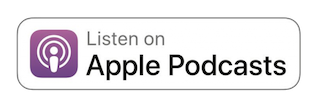
Where you can find Reuben: @Sales4Nerds, @Mimiran, Mimiran.com, the easy CRM for people who are awesome at serving clients and would love some help getting more, but hate “selling”, (Mimiran also makes it easy to track and grow referrals). You can also listen on Overcast, or Subscribe on Android, or Player.fm.
Want a way to make sales and marketing fun, without being “salesy”? Try Mimiran, the CRM for people who hate “selling”.
Get alerted when there are new episodes (1x/month):
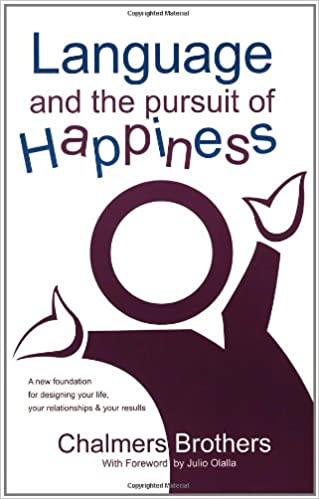

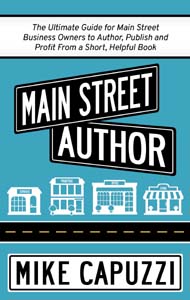
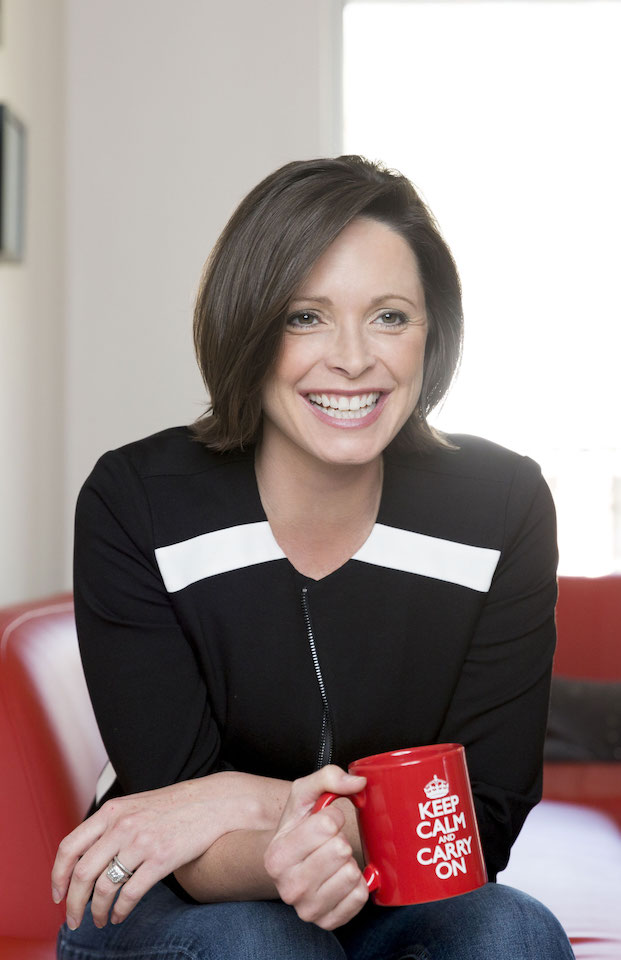
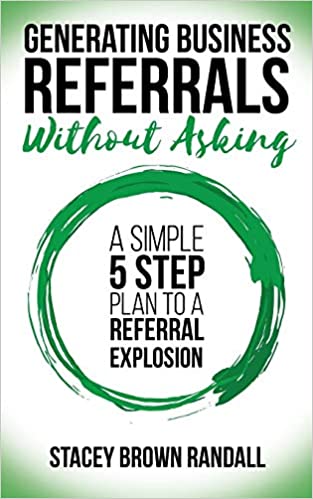
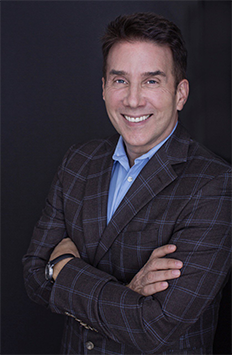
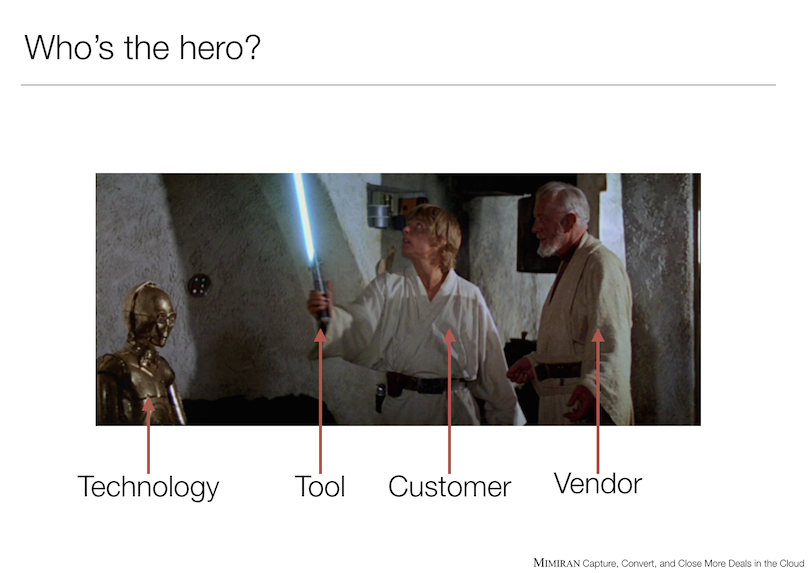
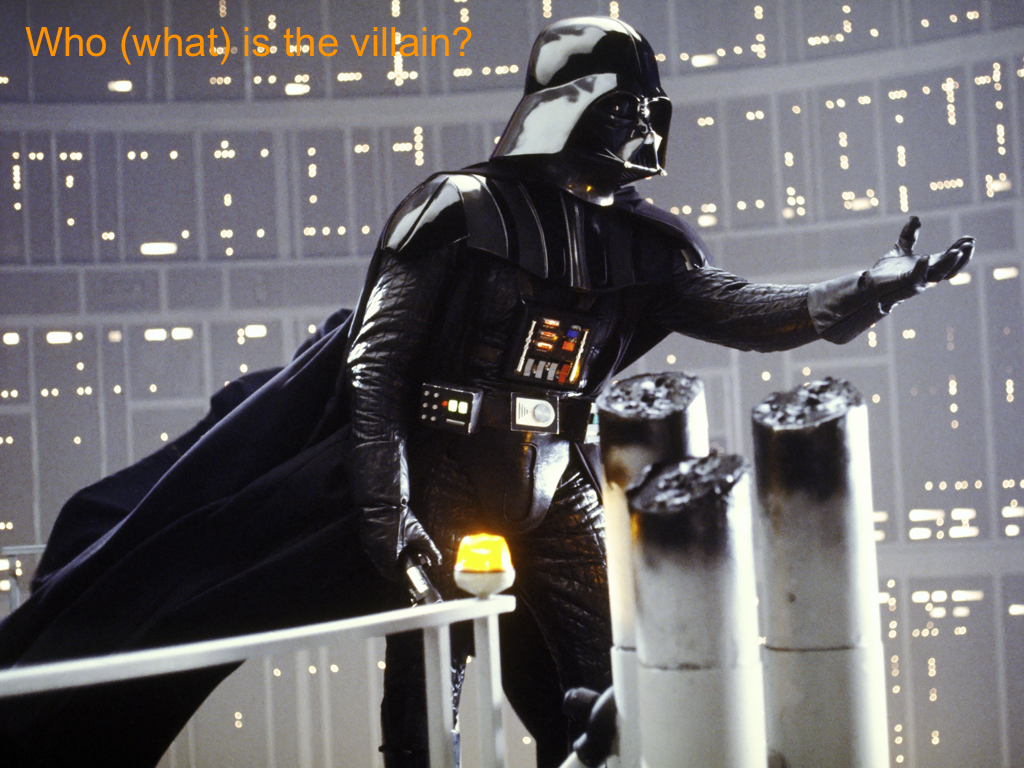
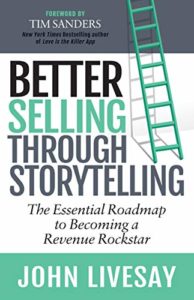
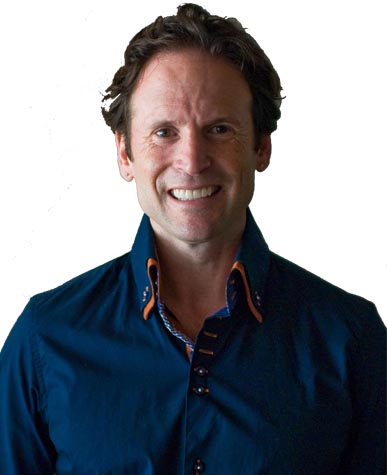
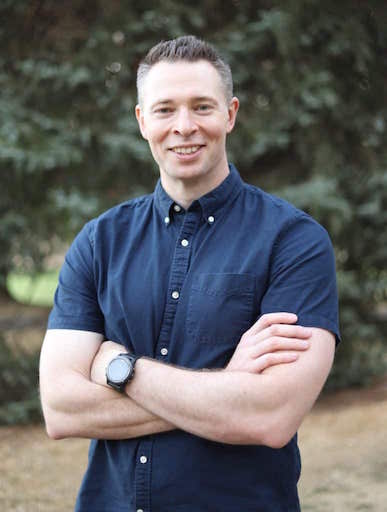
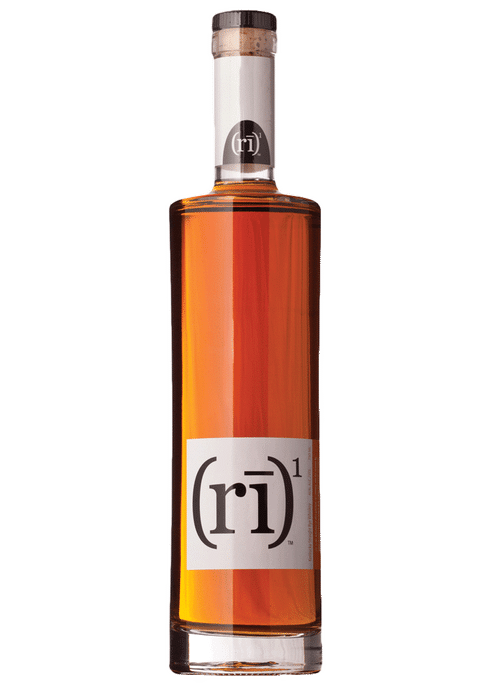


 Joy Beatty insists she is not a VP of Sales. Or Marketing. Even though she runs both teams for Seilevel, a requirements consulting firm that helps companies complete big software project successfully by actually having the right requirements in place. (For people who have never been involved in these big projects, this probably sounds crazy. For people who have, you know how important it is.)
Joy Beatty insists she is not a VP of Sales. Or Marketing. Even though she runs both teams for Seilevel, a requirements consulting firm that helps companies complete big software project successfully by actually having the right requirements in place. (For people who have never been involved in these big projects, this probably sounds crazy. For people who have, you know how important it is.)